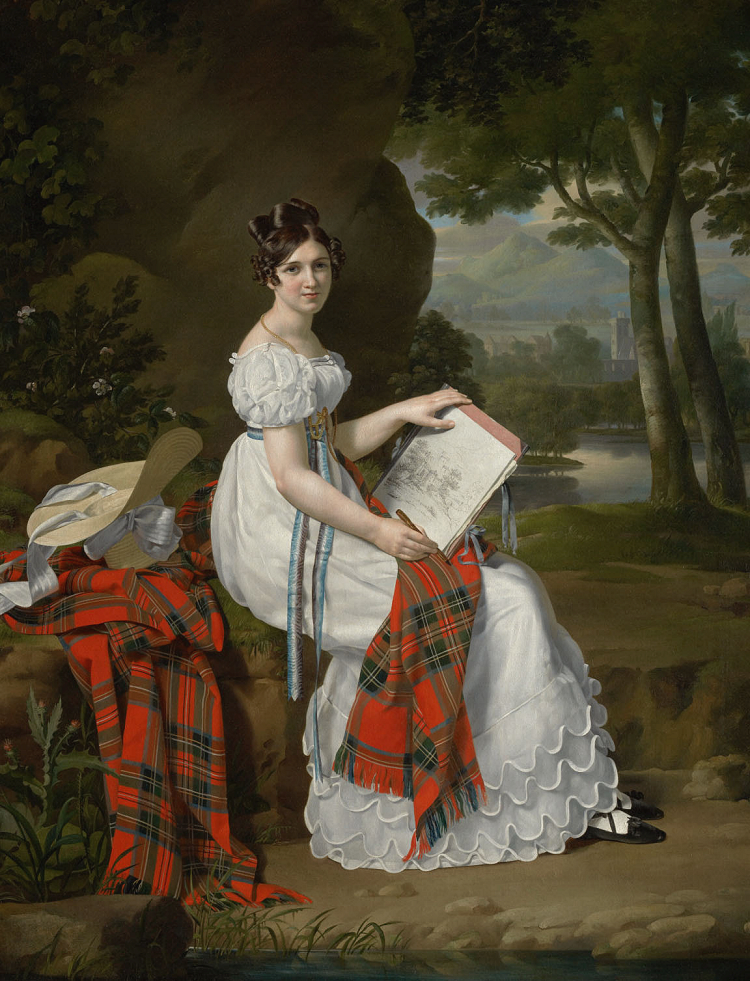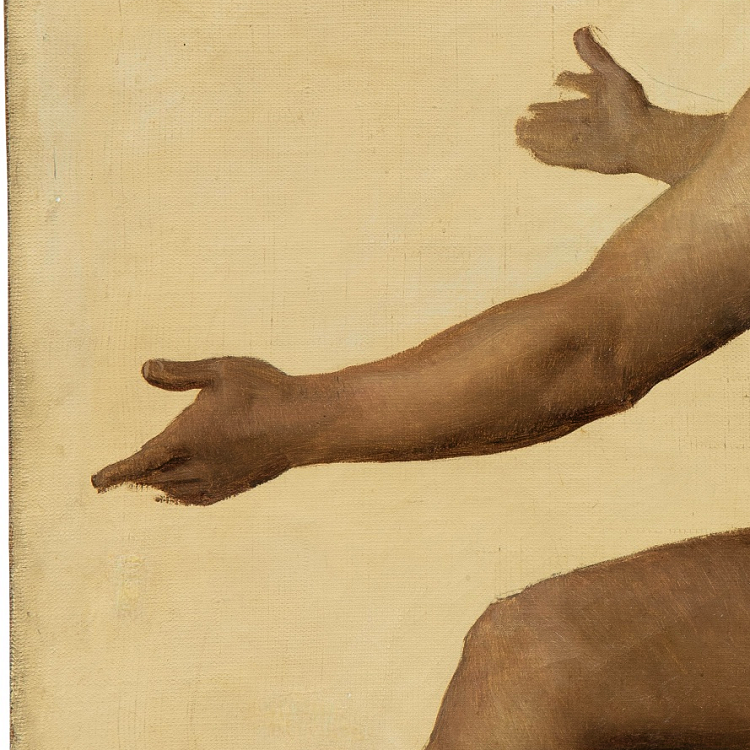In the leafy, sun-dappled garden of the Château de Bagatelle the figures of Charles Ferdinand and Marie Caroline, duc and duchesses de Berry, are seen to be enjoying a pleasant afternoon chat, while a governess attends to their children, Princess Louise and Henri, duc de Bordeaux. But the charming family group is only a cruel illusion;, the duc de Berry was assassinated seven months before the birth of his son, fully five years before the creation of the painting.
.png)

Charles Ferdinand d'Artois, duc de Berry (24 January 1778, Versailles - 14 February 1820, Paris) was the younger son of the comte d'Artois, future Charles X of France. During the French Revolution he left France with his father, served in the émigré army of his cousin, the Prince of Condé, and then with the Russian army. In 1801 he moved to England where he stayed for thirteen years. In 1814 he returned to France, and his uncle Louis XVIII appointed him commander-in-chief of the army at Paris on Napoleon's return from Elba. In 1816 he married Princess Maria Carolina of Bourbon-Sicily with whom he had one surviving child, their daughter Louise, later Duchess of Parma, at the time of his death. Leaving the opera with his wife on 13 February 1820, he was stabbed by a disgruntled Bonapartist and died the next day. Seven months later, the duchess gave birth to a son, Henri, duc de Bordeaux. Later better known by his preferred title, the comte de Chambord, he was considered by French Legitimists to be their king, Henri V. The comte de Chambord married but had no issue, so the senior male Bourbon line became extinct at his death in 1883.

A lithograph after the painting - which is now in the British royal collection - was made by Louis Julien Jacottet.
 |
| Interesting that, though this is supposed to be a copy of the original, all five of the main figures have been repositioned. |
*
François Edmé Ricois (29 August 1795, Courtalain - 21 January 1881, Mareil-Marly), French painter known for his views of castles and landscapes. 1816, he entered the École des Beaux-Arts, where he studied under Jean Victoire Bertin and Anne Louis Girodet. He made his Salon debut in 1819 and continued to exhibit there until just a few months before his death. He was awarded a second class medal at the Salon of 1824, and went on to exhibit widely in France and Switzerland, obtaining medals at Douai, Lille, Toulouse, and Cambrai. His daughter, Marie-Octavie Ricois, was also a painter.

%20-%20Gillot%20Saint-%C3%88vre.png)
,%20circa%201923%20by%20Gerald%20Leslie%20Brockhurst.png)
_(studio_of)Queen%20Mary%20(of%20Modena)%20(1658-1718)%201678.png)

%201877%2078.png)



















%20-%20The%20Family%20of%20Charles%20Ferdinand,%20Duke%20of%20Berry%20(1778-1820)%20in%20the%20Grounds%20of%20the%20Ch%C3%A2teau%20of%20Bagatelle,%201825.png)
.png)































